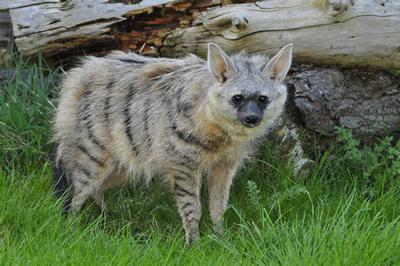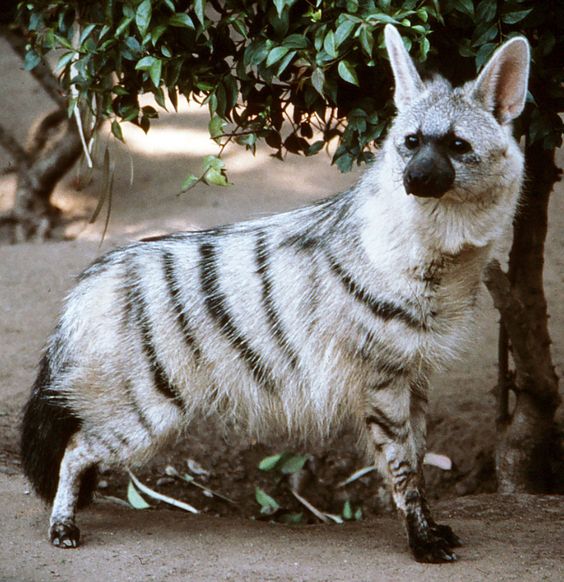
Discover the Enigmatic World of the Aard Wolf and Unveil Its Mysterious Ways
Have you ever heard of the remarkable creature known as the aard wolf? This captivating member of the canid family possesses a unique set of characteristics that sets it apart from its more well-known relatives. In this comprehensive article, we will delve into the intriguing world of the aard wolf, exploring its habitat, behavior, diet, and much more. Join us on this thrilling journey as we unravel the mysteries surrounding this enigmatic creature.
Aard Wolf: Unraveling Its Identity

Before we embark on our exploration, let’s gain some insight into what exactly an aard wolf is. The aard wolf (Proteles cristata) is a fascinating species native to the grasslands and savannas of eastern and southern Africa. Despite its name, which means “earth wolf” in Afrikaans, the aard wolf is not a true wolf but rather an intriguing member of the hyena family. Let’s dive deeper into its characteristics to understand its unique place in the animal kingdom.
Distinctive Appearance of the Aard Wolf
At first glance, one may mistake an aard wolf for a small hyena or even a fox due to its distinctive physical features. These captivating creatures have a slender build, measuring around 55 to 80 centimeters in length, with a shoulder height of approximately 40 centimeters. Their fur is short and coarse, typically sporting a sandy yellow or greyish-brown coloration, allowing them to blend seamlessly into their natural surroundings.
Habitat and Distribution
The aard wolf prefers open grasslands and arid regions, making it most commonly found in countries such as South Africa, Botswana, and Namibia. While they are mainly solitary creatures, aard wolves will occasionally form small family groups consisting of a monogamous pair and their offspring. These fascinating canids establish their dens in abandoned termite mounds, utilizing the underground chambers as a safe haven from predators and extreme weather conditions.
Diet: A Specialized Cuisine
One of the most intriguing aspects of the aard wolf is its highly specialized diet. Unlike its carnivorous counterparts, such as lions or hyenas, the aard wolf is primarily insectivorous. These remarkable animals have evolved to feed almost exclusively on termites, making them an essential component in regulating termite populations within their ecosystems.
The aard wolf’s diet mainly consists of one particular species of termite known as Trinervitermes bettonianus. By employing their long, sticky tongues, aard wolves can extract these delectable insects from their intricate mounds with astonishing precision and speed. It is estimated that a single aard wolf can consume up to 300,000 termites in a single night!
Nocturnal Habits and Social Behavior

Much like their distant relatives, the aard wolf is predominantly nocturnal, preferring the cover of darkness to carry out its activities. When nightfall blankets the savannas, these elusive creatures emerge from their dens in search of their favorite delicacy: termites. Their exceptional hearing allows them to locate termite colonies by listening for the sounds they produce.
Although generally solitary, aard wolves engage in monogamous relationships during the breeding season. The pairs work together to raise their young, displaying a commendable level of dedication and cooperation. This social structure helps ensure the survival and well-being of their offspring.
Predators and Threats
Despite their unique adaptations, aard wolves are not exempt from threats in their natural environment. While they may possess sharp teeth and powerful jaws, aard wolves lack the physical strength to defend themselves against larger predators. Lions, leopards, and hyenas pose significant dangers to these captivating creatures. Additionally, habitat loss and human encroachment on their territories further threaten the aard wolf’s population.
Conservation Efforts: Protecting the Aard Wolf
The plight of the aard wolf has gained attention in recent years as conservationists recognize the importance of preserving this extraordinary species. By raising awareness about the aard wolf’s unique ecological role and implementing measures to protect its habitat, we can ensure the continued survival of these captivating creatures for generations to come.
Through various conservation initiatives, such as the establishment of protected areas and efforts to mitigate human-wildlife conflicts, organizations and local communities are working tirelessly to safeguard the future of the aard wolf. These collective endeavors play a crucial role in maintaining the delicate balance of Africa’s diverse ecosystems.
In Conclusion
As our journey into the mysterious world of the aard wolf comes to a close, we are left with a profound appreciation for this remarkable creature. From its specialized diet to its nocturnal habits and cooperative social structure, the aard wolf offers us a glimpseinto the intricacies of nature’s design. Despite its name that may evoke images of a fierce predator, the aard wolf presents a gentle and remarkable existence in the African grasslands.
Through its unique adaptations and specialized diet, the aard wolf plays a vital role in maintaining the balance of its ecosystem. By controlling termite populations, they contribute to the overall health of the grasslands, benefiting not only themselves but also other species that rely on these habitats.
However, the future of the aard wolf hangs in the balance. Habitat loss, human-wildlife conflicts, and predation by larger carnivores threaten their survival. It is imperative that we continue to raise awareness about their importance and support conservation efforts aimed at protecting their fragile existence.
By preserving the grasslands and providing safe havens for the aard wolf, we can ensure that future generations will have the privilege of witnessing the wonders of this enigmatic creature. Let us come together to celebrate and protect the aard wolf, allowing it to roam freely and thrive in the vast landscapes of Africa.
Join the movement to safeguard the aard wolf’s future. Together, we can make a difference.